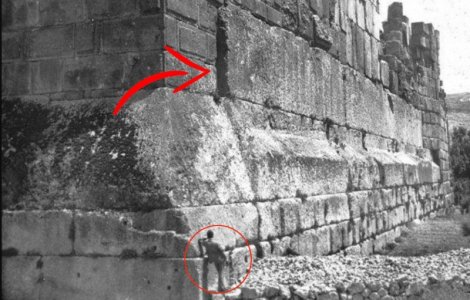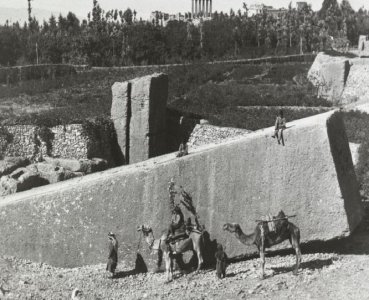bobcat
Well-known Member
- Location
- Northern Calif
This is a picture of the wall stones at Baalbek in Lebanon. No one really knows when they were chiseled or moved, but most indications are that it was before the Romans. The thing is, three of the stones in this wall weighed over 750 tons (Around 1 1/2 million pounds) each, and not only were they moved from the quarry some distance away, but they were also elevated nearly 15 feet up and fitted very tightly into place. Today there are only 18 cranes in the entire world capable of moving them, and they are made from extremely heavy welded steel and giant cables.

In addition, there are even three larger stones at Baalbek that weigh up to 1500 tons

Also check out these temple columns made by them as well, and moved to position and somehow erected into place. Their ingenuity is truly mind blowing.


In addition, there are even three larger stones at Baalbek that weigh up to 1500 tons

Also check out these temple columns made by them as well, and moved to position and somehow erected into place. Their ingenuity is truly mind blowing.





